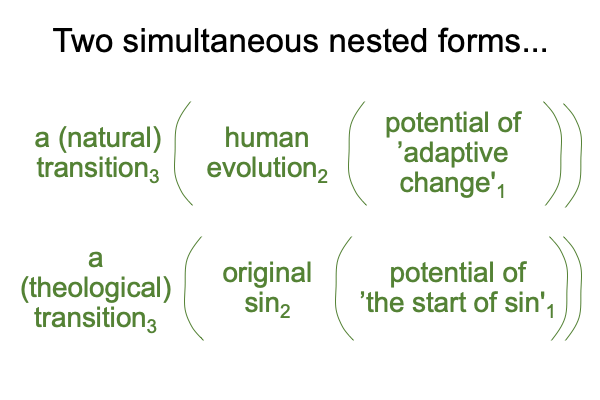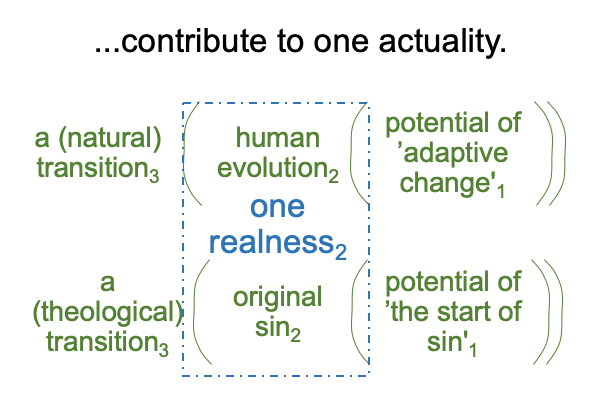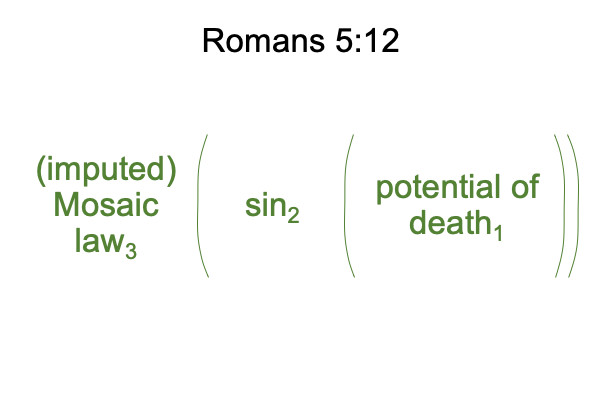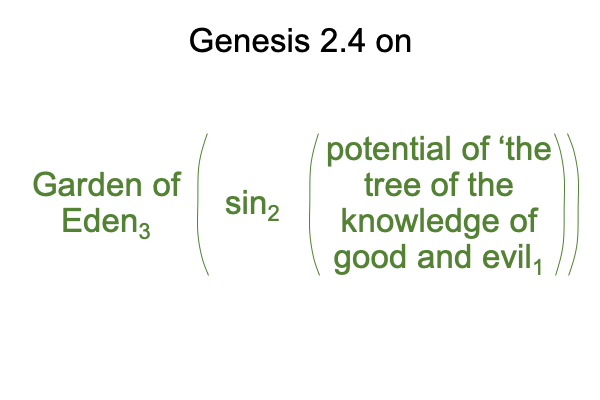Looking at Loren Haarsma’s Book (2021) “When Did Sin Begin” (Part 1 of 21)
0001 Loren Haarsma is an old man, a physics professor and a Christian. As a fellow of the American Science Affiliation, he has lectured on the intersection of science and faith. He is a scholarly voice in the Biologos network.
The full title of his book is When Did Sin Begin: Human Evolution and The Doctrine of Original Sin (2021, Baker Academic, Grand Rapids, MI).
If one goes to the resources page for the Biologos.org website, then selects the topic, “Bible”, and the subtopic, “Adam and Eve”, one will find an extensive collection of essays on the concerns in Haarsma’s title: timing, evolution and original sin.
0002 How do these concerns fit into a category-based nested form?
Timing calls forth a normal context3. The question, “when?”, implies an event. Here, the event is a transition. For evolution, the transition is a topic of natural inquiry. For original sin, the transition is a topic for theologians.
Human evolution and original sin belong to the realm of actuality2.
The only item not mentioned is potential1. Here, the question mark applies. For human evolution2, the potential must be adaptive change1. For original sin2, the potential is the start of sin in our current Lebenswelt1.
0003 To me, these concerns yield two category-based nested forms.
Here is a picture, following the recipe in A Primer on the Category-Based Nested Form.

0004 These two normal contexts exclude one another.
0005 The upper normal context3 associates to evolutionary science. The focus of attention is on natural history and genetics.
Typically, an adaptive change produces speciation. However, in human evolution, an adaptive change may be cultural. Human evolution is both biological and cultural. Since natural history and genetics do not adequately describe culture, they may not be enough to scientifically describe human evolution. Indeed, no natural science convincingly addresses cultural change.
0006 The lower normal context3 associates to theological science. The focus of attention is on special and general revelation.
Special revelation includes Genesis 1-11. Genesis 1-11 divides into two parts. In the Primeval History (chapter 2:4-11), Adam is brought to life as the first human, even though um… in the Creation Story (chapter 1-2.3), humans are already intended, created and blessed, in the framework of six days of creation.
General revelation includes Greek philosophy, among other traditions. Greek philosophy is useful for resolving contradictions. For example, some theologians resolve the contradiction inherent in the two parts of Genesis 1-11 by claiming that Adam (in Genesis 2.4-4) is the male and female “them” that God intended, created and blessed (in Genesis 1).
Say what?
In the Creation Story, God creates them, male and female. So, Adam must have had some sort of divided consciousness, one operating in his mind and the other working in his ribs.
Just kidding.
0007 Greek philosophy’s usefulness is not limited to resolving contradictions, no matter how silly the resolution may be. Greek philosophy may also be used in situations where contradictions cannot be resolved. Such a situation occurs here. Human evolution2 and original sin2 belong to a single actuality. They both pertain to one realness2.
Here is a picture.

0008 Two (apparently independent) category-based nested forms intersect in the realm of actuality2. The two constituting actualities cannot escape the one realness, because they constitute the one realness. Certain contradictions are accidental. Certain contradictions are essential. Greek philosophy is useful for separating the accidental from the essential. A set of essential contradictions is called “a mystery”.


